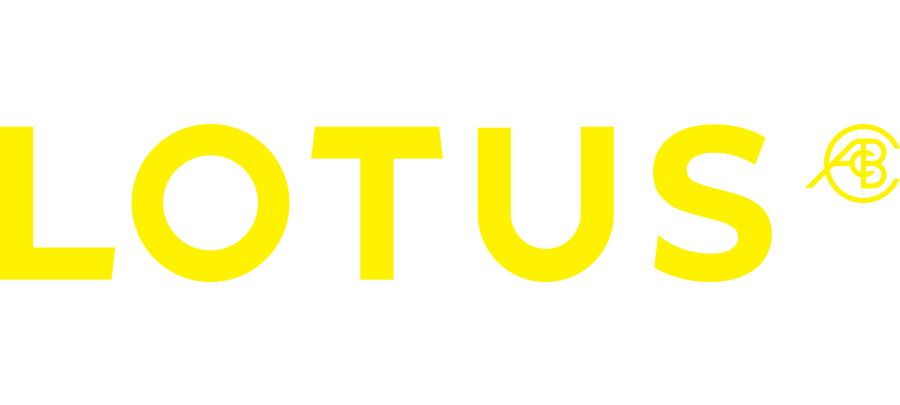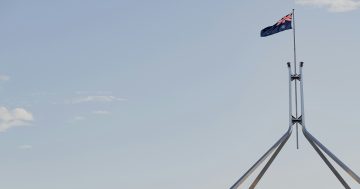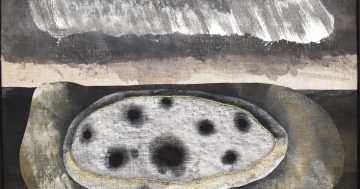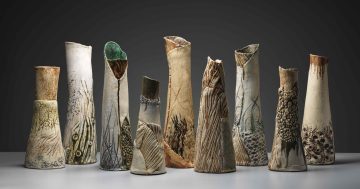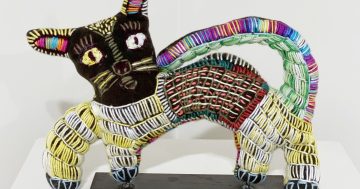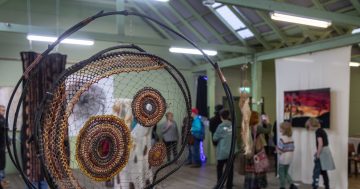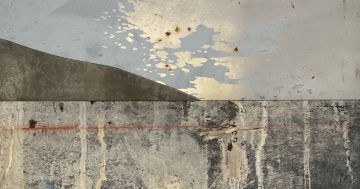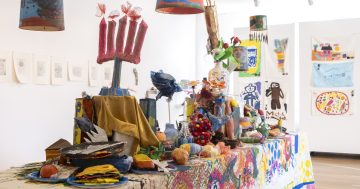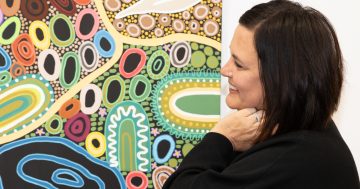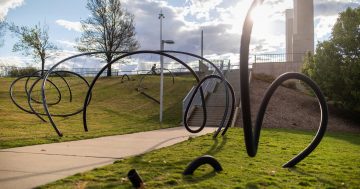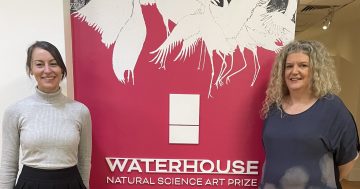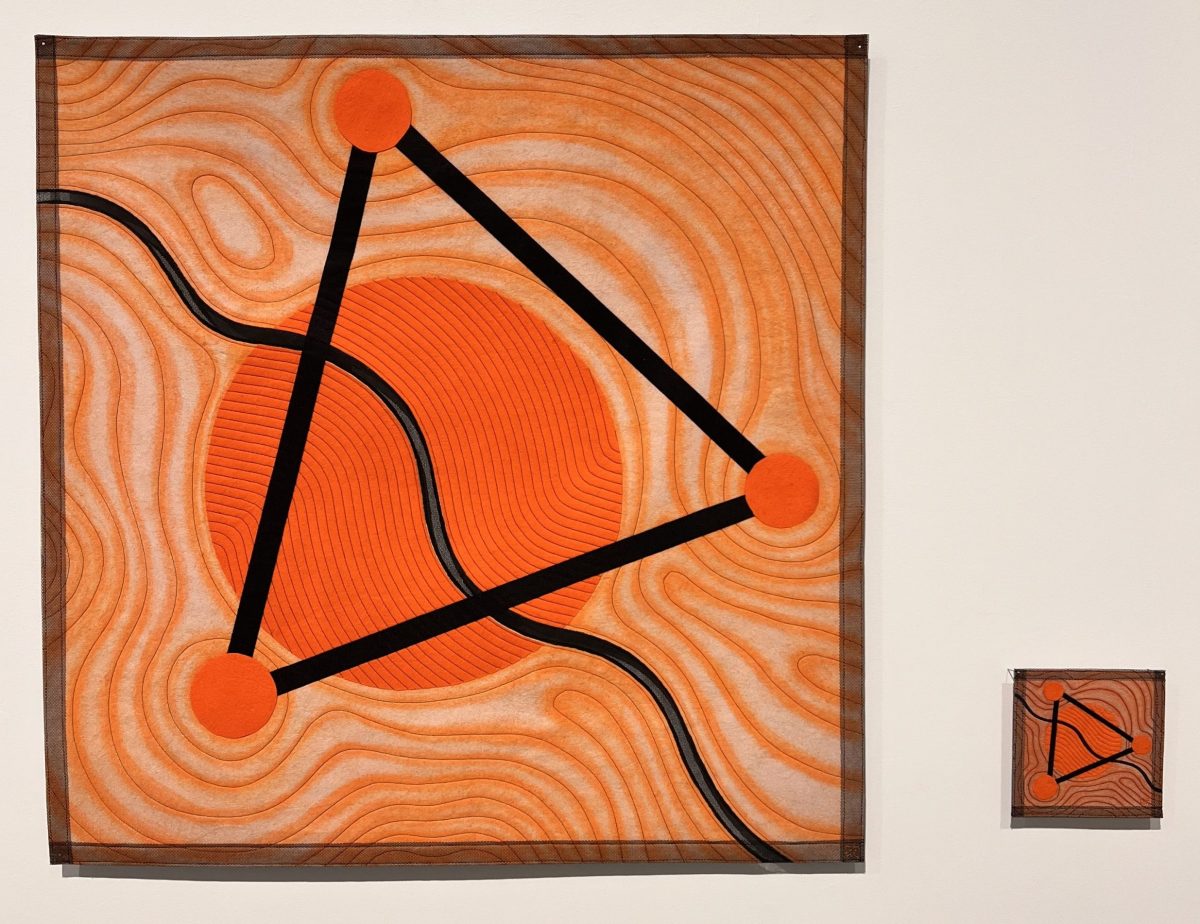
Dianne Firth, Not to scale, textile, felt, net, cotton, thread, 830mm high x 820mm wide x 5mm deep, plus miniature version, 150mm high x 150mm wide x 2mm deep, inspired by poem by Paul Munden.
Dianne Firth’s work deals with the land and its waterways. In one aspect of her professional life, she is a trained and highly regarded landscape architect, a Fellow of the Australian Institute of Landscape Architects who advises the ACT Government on issues related to landscape heritage, trees and urban design.
In her closely related parallel life, she is a fibre artist.
Firth received early training as a textile artist at Newcastle Technical College and Glasgow Art School. Subsequently, she became involved working with textiles for fashion, theatre costume and interiors.
She also embraced the art of quilting and, after viewing a collection of Amish quilts at the National Gallery of Victoria in the early 1980s, took a master class with the American art quilter Nancy Crow. Subsequently, she developed a high profile in the Australian quilting community.
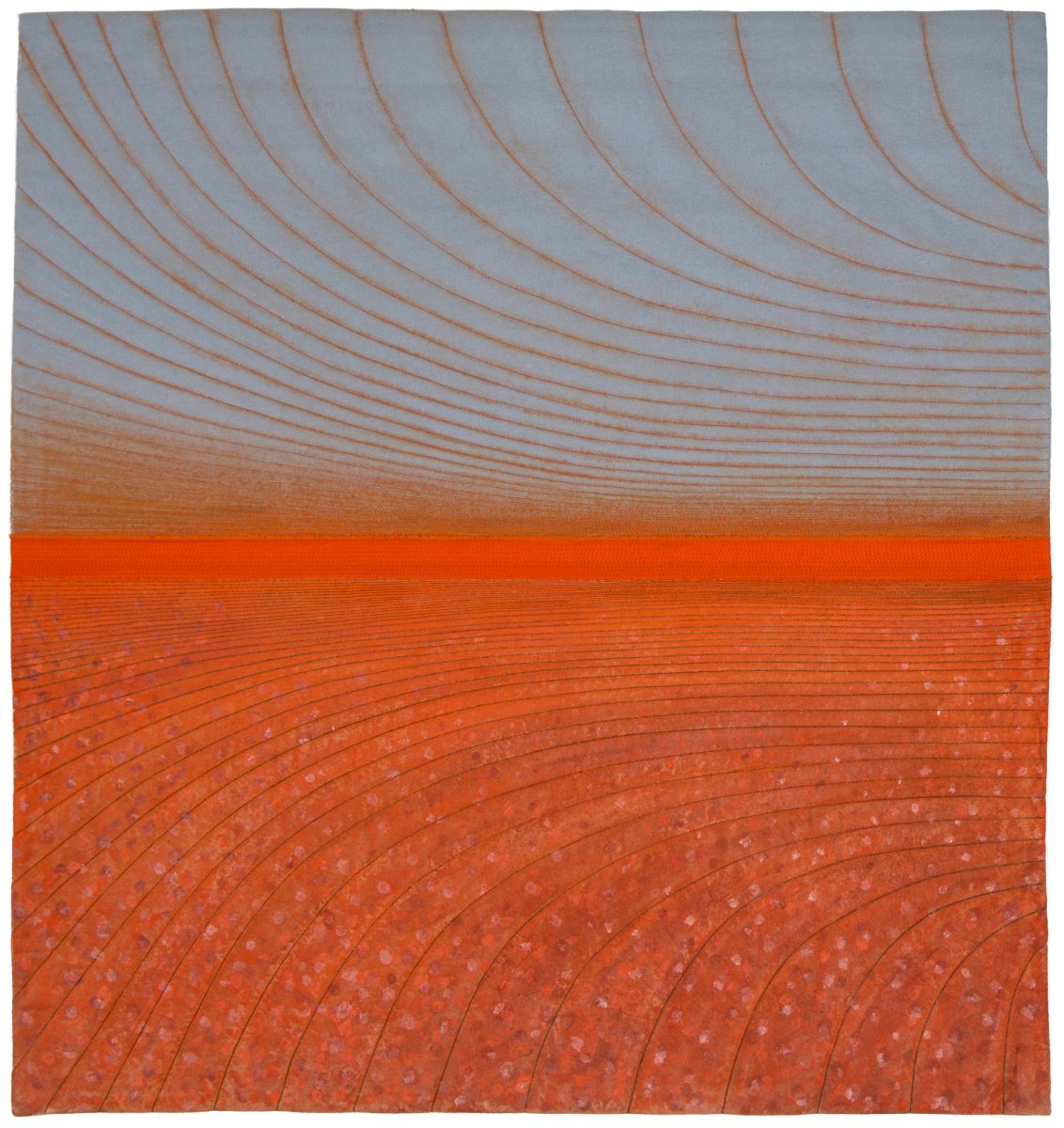
Dianne Firth, Reflections on Lake George, textile, felt, cotton, thread, paint, 790mm high x 750mm wide x 5mm deep, inspired by poem by Paul Magee.
Although she is especially drawn to wool and felt as favourite materials, Firth is experimental in her use of other materials. She employs dyes, heats and melts various materials, and on occasion may combine glass and bark into her art.
Her large exhibition at Belco Arts demonstrates a lifetime of experience working with the land as well as with various techniques of experimenting with textiles. Titled Poetry of the Lakes, the exhibition takes its starting point with Lake Burley Griffin and Weereewa (Lake George or Ngungara).
Both these great waterways have inspired artists for many generations and been the subject of exhibitions.
Firth’s exhibition is unusual in three areas. Firstly, she considers both lakes – the fairly recent, artificial one created from the damming of the Molonglo River, and the ancient endorheic lake that has no outflow to rivers or oceans.
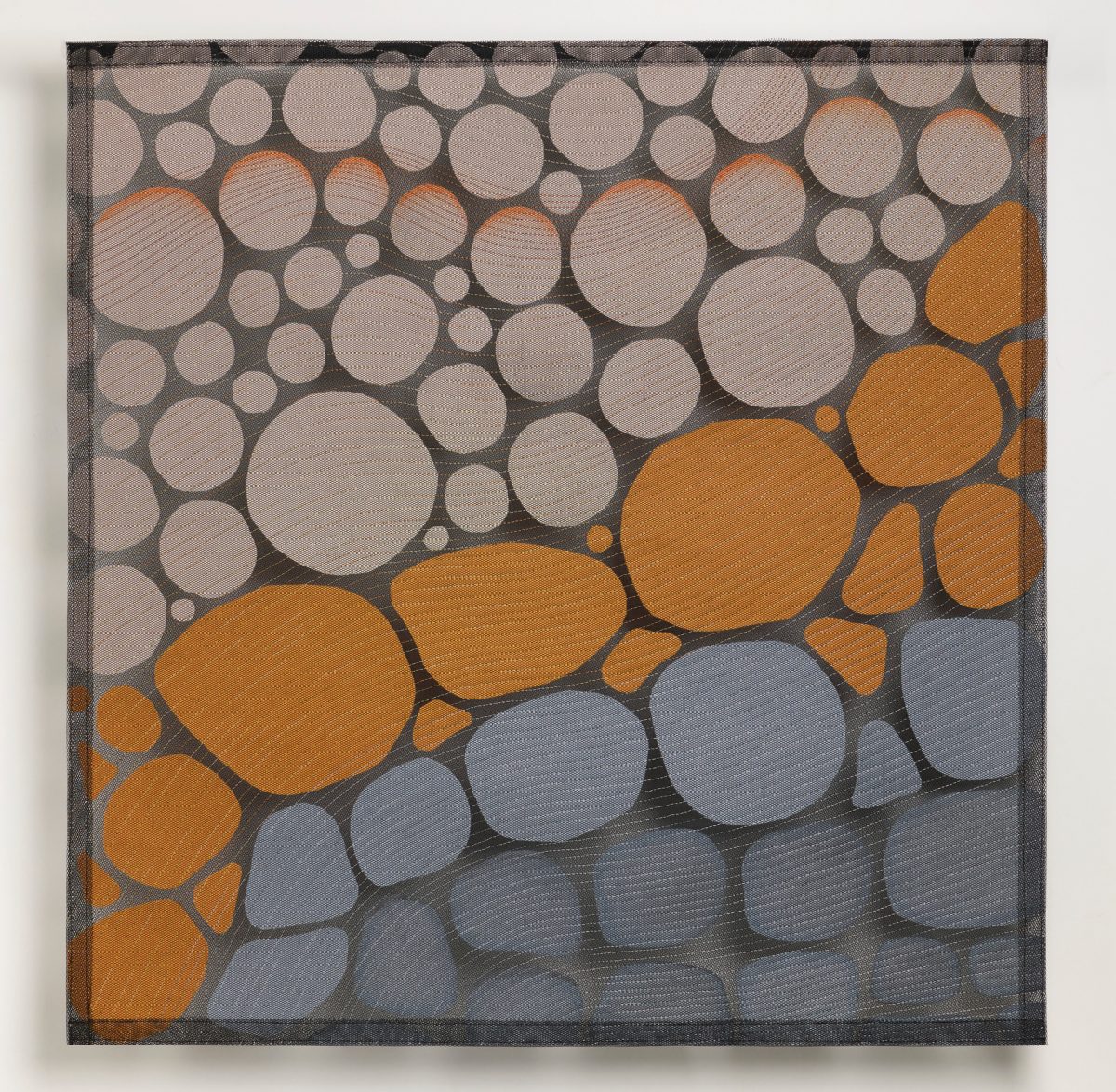
Dianne Firth, Water naming, textile, felt, net, thread, 690mm high x 670mm wide x 2mm deep, inspired by poem by Sandra Renew.
The second peculiarity of Firth’s approach is that she has invited poets associated with the Centre for Creative and Cultural Research at the University of Canberra to write about these lakes. Their poetry is reproduced in the catalogue in which Firth highlights the verses that inspired her specific pieces. In a sense it is a collaborative exhibition with many poets and one visual artist.
The third peculiarity of Firth’s approach in this exhibition is the 44 pieces of textile art she has created in response to the lakes and poetic evocations. Felt, woven wool, netting, cotton and thread are some of the materials employed in the pieces.
Take for example a curious “diptych”, Not to scale. The inspirational verse by Paul Munden addresses the complexities of the planning process and the compromises involved with Lake Burley Griffin. In part of his poem Munden writes: “the sprawling lake/is a plausible marriage/of argued design/and organic growth,/a working draft good enough/to go along with,/of which one might/in fact grow fond.”
Firth’s textile combines felt, net, cotton and thread in a vibrant design where the harshness of geometry is accommodated by the flowing organic landscape masses. The colour palette is a mixture of earth ochres, orange and white with black compositional lines.
Firth creates breathing surfaces with a strong tactile quality. In a clever conceptual conceit, she juxtaposes two very similar designs – presented almost as a diptych – one a miniature of the other. In other words, “not to scale”.
The exhibition is full of these visual and conceptual games permeated by a sense of lyricism.
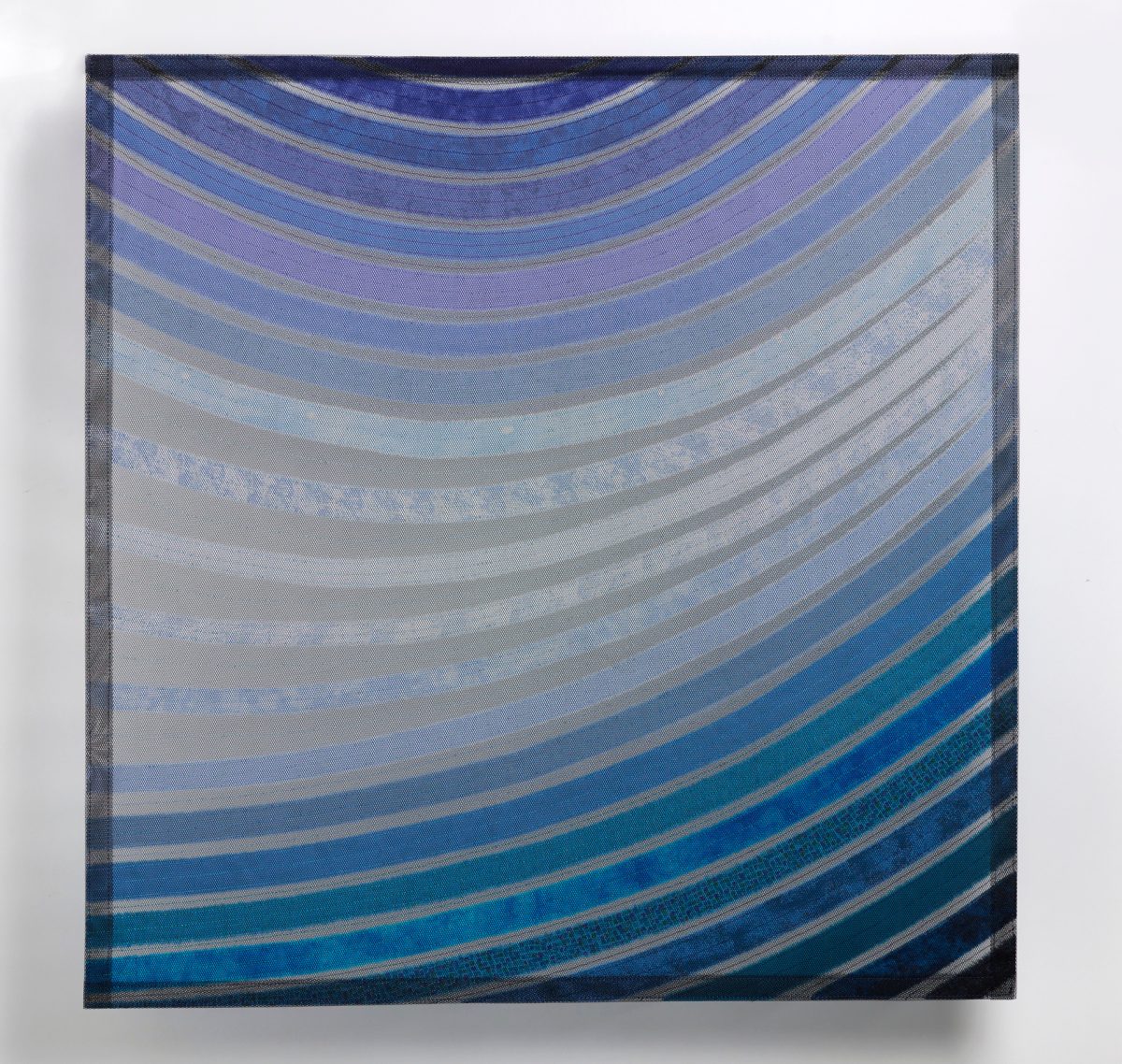
Dianne Firth, Guess, textile, cotton, net, thread, 690mm high x 680mm wide x 2mm deep, inspired by poem by Paul Hetherington.
One of the most effective pieces is Guess, where again there is a play between the larger work and its miniature. The gradations are those of blues, pale water colours and bands of air.
The inspiration verse is by well-known Canberra poet Paul Hetherington, where part of his poem reads: “A blue guess;/or love’s coming/and going,/only seen fully/in the days before/it vanishes.” There is a beauty and a lingering note of eroticism.
Collaboration in the arts is frequently attempted but rarely successful. Firth’s Poetry of the Lakes is an ambitious and largely successful celebration of some of the waterways common to the experience of many people living in the Canberra region.
Dianne Firth’s Poetry of the Lakes is at the Pivot Gallery, Belconnen Arts Centre, 118 Emu Bank, Belconnen, from Tuesday to Sunday, 10 am to 4 pm, until 1 December.
